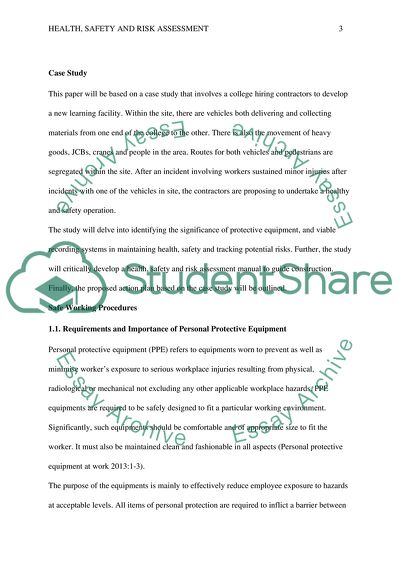Cite this document
(Health and Safety Procedures Research Paper Example | Topics and Well Written Essays - 4500 words - 1, n.d.)
Health and Safety Procedures Research Paper Example | Topics and Well Written Essays - 4500 words - 1. https://studentshare.org/engineering-and-construction/1853088-health-and-safety-and-risk-assessment
Health and Safety Procedures Research Paper Example | Topics and Well Written Essays - 4500 words - 1. https://studentshare.org/engineering-and-construction/1853088-health-and-safety-and-risk-assessment
(Health and Safety Procedures Research Paper Example | Topics and Well Written Essays - 4500 Words - 1)
Health and Safety Procedures Research Paper Example | Topics and Well Written Essays - 4500 Words - 1. https://studentshare.org/engineering-and-construction/1853088-health-and-safety-and-risk-assessment.
Health and Safety Procedures Research Paper Example | Topics and Well Written Essays - 4500 Words - 1. https://studentshare.org/engineering-and-construction/1853088-health-and-safety-and-risk-assessment.
“Health and Safety Procedures Research Paper Example | Topics and Well Written Essays - 4500 Words - 1”. https://studentshare.org/engineering-and-construction/1853088-health-and-safety-and-risk-assessment.


